Did you know in 2020, $26.7 trillion in eCommerce trade was transacted? What’s more impressive is that figure has grown by 19% when compared to 2019.
With that said, only 51% of retail executives feel their business is well prepared for the changing online landscape due to COVID-19.
If you’re a small business owner that has yet to transition to online selling, you’ll love this article.
Below you’ll learn how to transition your ‘offline’ business to online selling in seven steps:
- Mapping out your online customer journey
- Defining and organizing your online products and services
- Outlining your technology requirements
- Choosing your eCommerce tools
- Setting up your online products and services
- Selecting and integrating your marketing platform
- Letting your audience know that you are open for business online
1. Mapping out your online customer journey
Many ‘offline’ businesses have adopted an online model in the face of lockdowns and restrictions. Additionally, many new businesses are making online selling the core of their operations.
Without an effective plan, transitioning a small business to online selling can lead to failure.
I’ll use a hypothetical accounting firm to help explain the process of taking an offline business online. The hypothetical firm, Acme Accounting, is a small suburban accounting firm. The firm wants to remain relevant and accessible by transitioning its services to an online model.
The first step for Acme Accounting is to define how it wants its target audience to interact with the firm online.
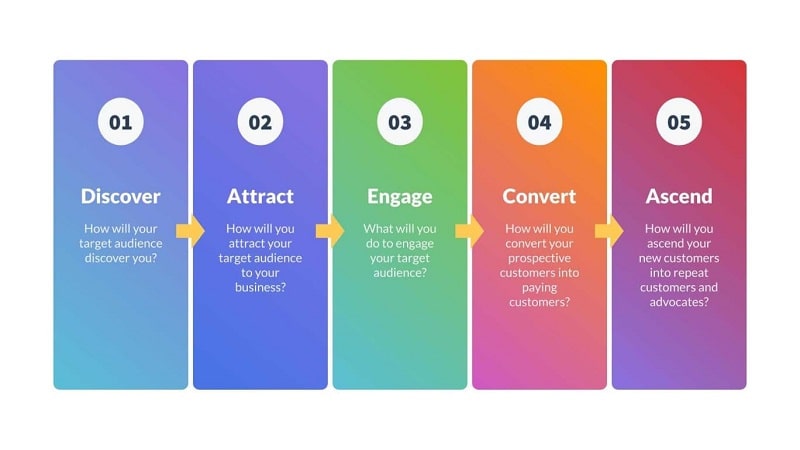
For example, the online customer journey could look like this:
- Acme Accounting is discovered through online search and social media
- Prospective clients click through to the firm’s website
- They proceed to book, schedule, and pay for an initial consultation on the website
- The initial consultation is conducted via virtual video conference
- Once the initial consultation is completed, an accounting package is presented. This can be signed for and purchased online.
- The client may buy more online consulting or digital products after they have agreed to an accounting package.
By defining the steps above, we can see how the entire customer journey for Acme Accounting can work in an online-only environment.
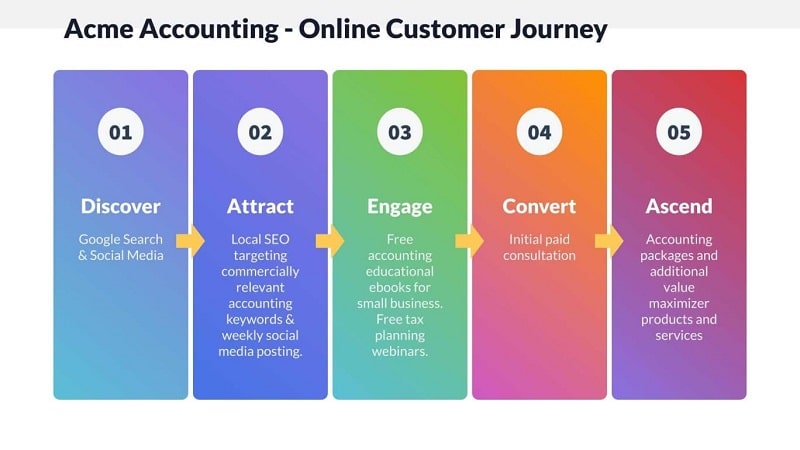
With these steps in mind, we can now define the products and services that we can offer online.
2. Defining and organizing your online products and services
Once you have a clear picture of your online customer journey, the next step is to define your online products and services.
Here are the online products and services for Acme Accounting from the description in step one:
- Initial paid virtual consultation
- 3x different accounting packages depending on the type of business
- Sole-traders
- Small businesses
- Complex businesses that need custom packages
- 3x extra services that can be provided when the client needs them
- Extra virtual consultations
- Self-published digital and hardcover books
- Online reporting
Organizing our products and services in line with your customer journey helps you plan your online processes. We can see the first step for all potential clients is to have the book and pay for an initial consultation.
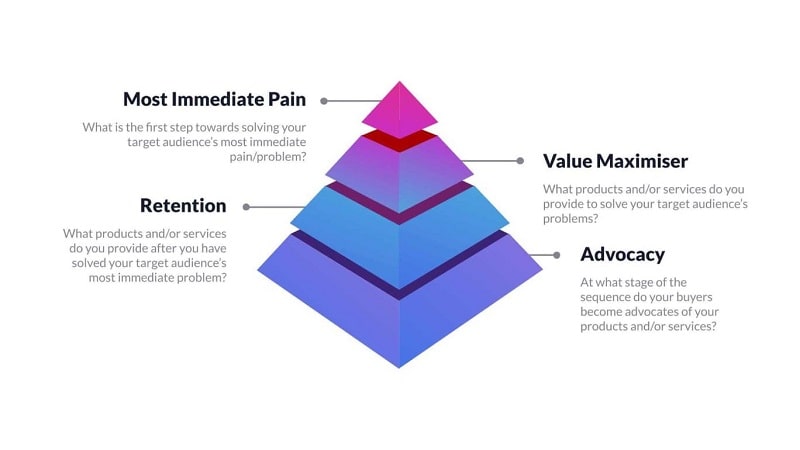
That way, the firm can assess the business’s needs and recommend the best-fitting accounting package to them.
The accounting packages are the firm’s core online offer. The primary goal of the online model should be to progress all qualified prospective clients to one of the packages on offer.
The extra services offered in step three are the value maximizers. Since most profits come from the accounting packages, these value maximizer services help increase both earnings and retention per client.
What we have achieved so far is a three-phase online product and service hierarchy that we want all qualified clients to progress through. With this pathway defined, we can now begin to define the details of each product and service we will be offering online.
3. Outlining your technology requirements
So far, we have our online customer journey and online product hierarchy defined. Now it’s time to outline the technology requirements we’ll need to deliver our products and services.
Let’s define how we will deliver each of our three phases of service for Acme Accounting:
- Initial consultation
- Prospective clients will need to fill in their details into a web form and select an available time from a synced team calendar.
- Once a time is selected, they’ll need to pay the once-off flat fee via an online credit card payment.
- With payment confirmed, an email will be sent with a link to download the virtual conferencing software. Acme Accounting will also receive an email with all the client’s submitted details and booking info.
- Accounting packages
- Once the initial consultation is completed, an email is sent to the client. The email has a link to an online proposal that contains the recommended accounting package.
- The client digitally signs the accounting package terms and conditions. Once terms are signed, the client subscribes to monthly payment via credit card.
- Extra services
- The client initiates the need for an extra service
- Acme Accounting emails the client a link to book and pay for the extra services. These services are either once-off or recurring, depending on the type of service.
Now that we have a clearer understanding of how we will deliver the online services, we can begin selecting the tools required to meet our needs.
4. Choosing your eCommerce tools
Knowing what the best eCommerce tools are to use for your business can be an overwhelming task.
Most businesses tend to sign up for an eCommerce tool based on an ad they’ve seen or a recommendation. Some of these businesses fall into a trap: they invest loads of time and money only to find out the tool doesn’t fulfill their requirements.
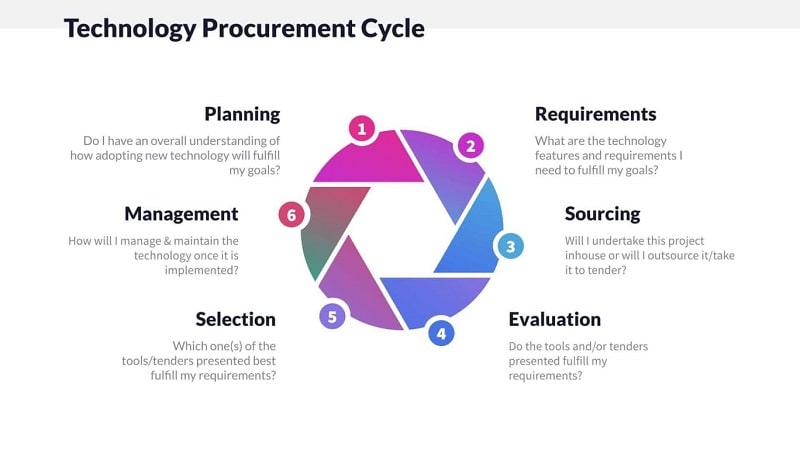
That’s why the first three steps before choosing your tools are all about planning. That way, you can narrow down the plethora of eCommerce tools out there to a few that will meet all your requirements.
Based on the planning that we have done for Acme Accounting, we know that we’ll need a set of tools that meet the following requirements:
- Online appointment booking, scheduling, and payment
- The appointment calendar displays times available based on the firm’s Google or Office 365 calendar
- Supports custom web form fields
- Allows both non-paid and paid bookings
- Paid bookings are to be processed via an online credit card payment
- Creates an online virtual conference link once the booking has been confirmed
- Sends confirmation emails to both the client and the firm on confirmation
- Sends a series of follow up reminder emails to both the client and the firm
- Online video conferencing
- Can integrate into the appointment booking tool and eCommerce platform
- Online proposals
- Ability to create an online proposal from three predefined templates
- Allows the client to view the proposal, digitally sign and process payment online
- Sends automated reminder emails to the client until the proposal is signed
- Selling digital and physical products and services online
- Ability to sell self-publication in either digital or hardcopy formats
- Digital services need to integrate with the appointment booking tool
- They also need to support either once-off or recurring revenue
With those requirements above, here are a few tools that could fulfill the scenario:
- Online appointment booking, scheduling, and payment
- Calendly
- Acuity Scheduling
- Wishpond Appointments
- Online video conferencing
- Zoom
- Microsoft Teams
- Google Meet
- Online proposals
- Practice Ignition
- PandaDoc
- Proposify
- Selling digital and physical products and services online
- Shopify
- Wishpond Payments
- Wix eCommerce
The purpose of the exercise above is not to tell you which tool to use but to teach you how to choose the right tool for your business.
With your tech stack of tools selected, you can now set up your online products and services.
5. Setting up your online products and services
By now, you should have selected the right set of tools to meet your online business requirements. Now it’s time to start building out your online product and service catalog.
The process for setting up your online products and services will vary depending on what eCommerce platform you choose. With that said, it’s best to consult your platform documentation for the exact steps to achieve this.
Let’s take a look at how to set up Acme Accounting’s initial paid consult service in Shopify.
1) Create a Shopify account and title your online store
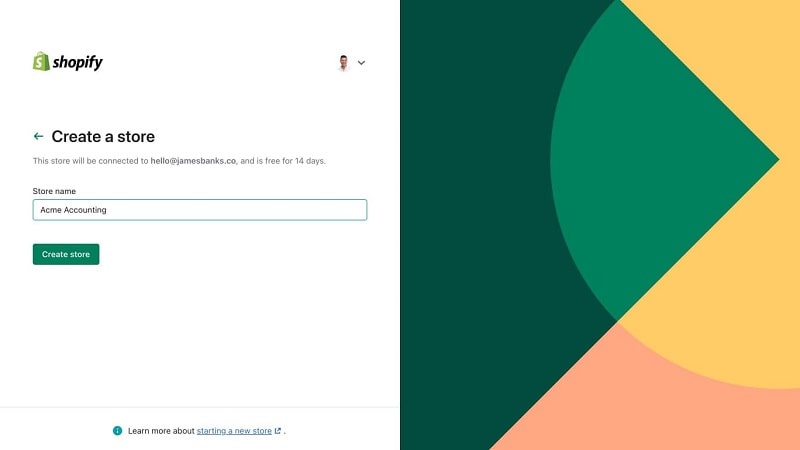
2) Navigate to the ‘All Products’ section and create a new product. If you sell a digital product or service, uncheck the ‘This is a physical product’ box.
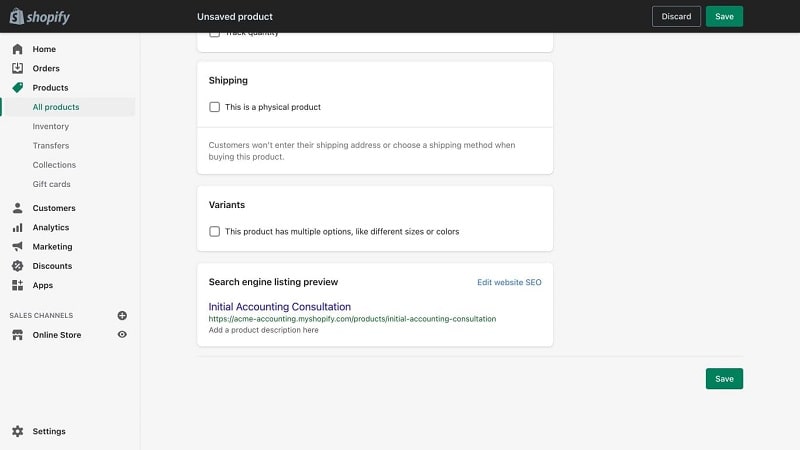
3) Create a Calendly and Zoom account. Once created, navigate to the integrations page in Calendly. Select the Zoom integration and complete the steps to connect Zoom with Calendly.
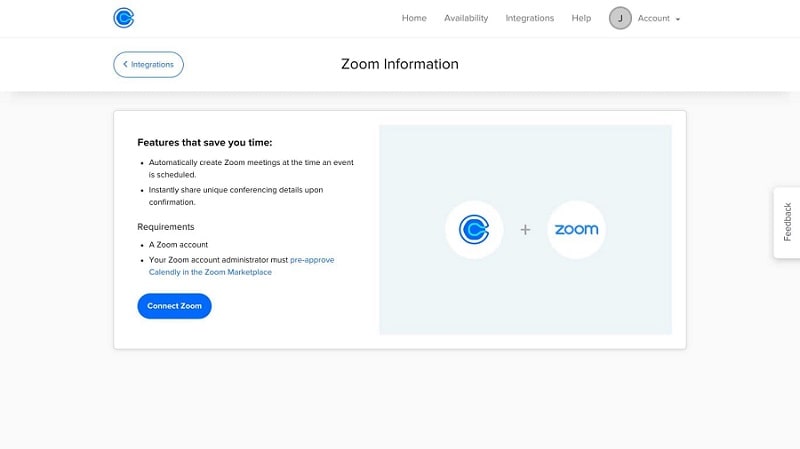
4) Create the bookable service and select Zoom as the location. When a client books a time from Calendly, a Zoom meeting will automatically be set up.

5) From the Calendly events page, click the share button. Click ‘Add to website’ and select ‘Embed inline.’ Copy the embed code.
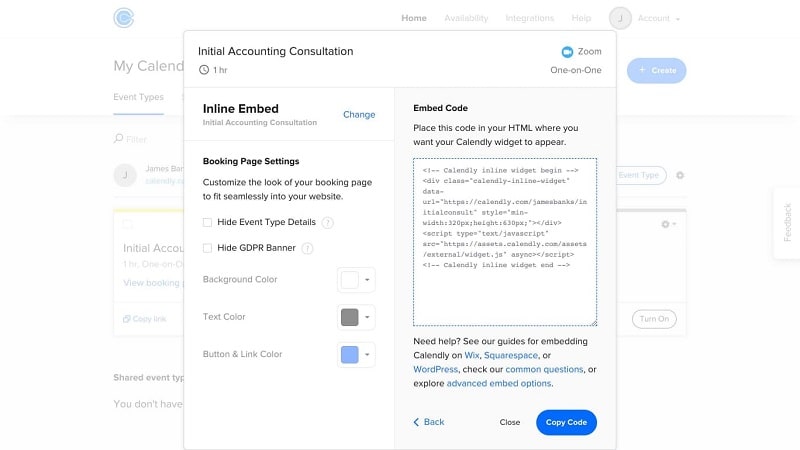
6) Go back to Shopify and create a new page. Title the page with your event title and click on the code button. Paste in the Calendly embed code and save the page.
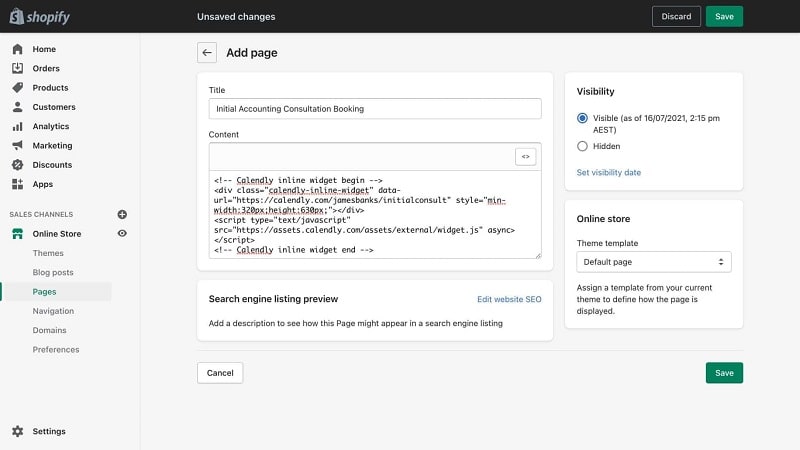
7) Open the page in Shopify. You should see the Calendly calendar on the page. Test that it works as intended, then copy the page link.
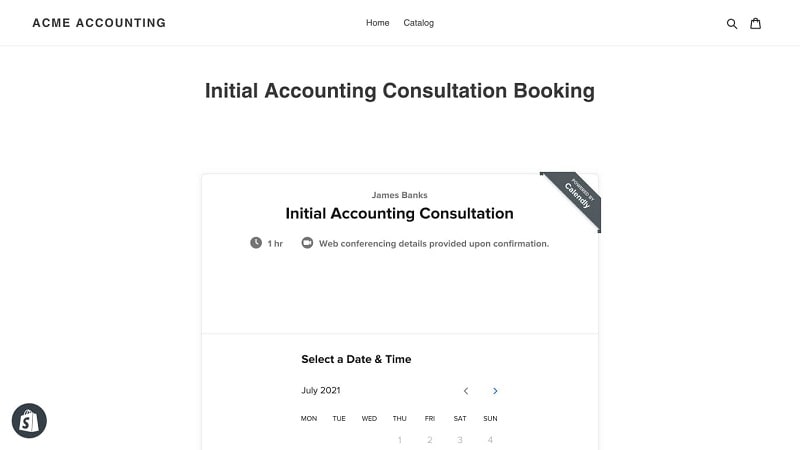
8) Navigate to ‘Settings’ then ‘Notifications.’ Open your ‘Order Confirmation’ email template. Edit the template’s wording and paste in your appointment page URL where appropriate.
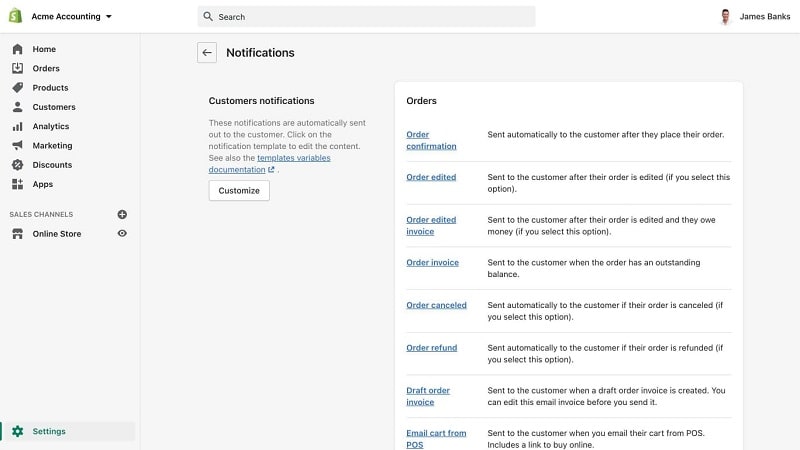
*Note: *the following step should only be followed if you are selling a single digital product in Shopify. If you are selling more than one product, you’ll need to create a conditional post-checkout redirect using code. Or, you can send the appointment page link via a conditional email workflow. I’ll outline how to do the latter in the following step.
6. Selecting and integrating your marketing platform
Congratulations! You should now have all the foundations in place to start taking orders for your online products and services.
If you want to take your online business to the next, setting up an online marketing platform would be the logical next step.
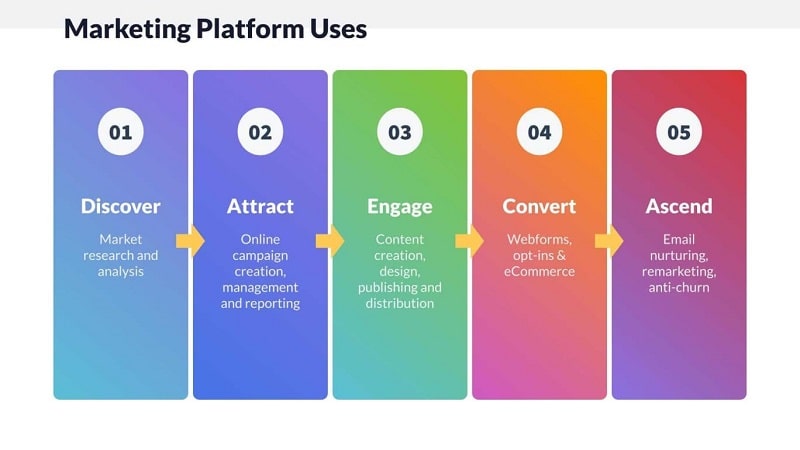
An online marketing platform can help you market your online products and services to new and existing audiences.
Additionally, marketing platforms can help streamline your digital communication, increasing customer engagement & satisfaction.
When it comes to choosing a marketing platform for small businesses, you’ll most likely want the following features:
- Edit and manage your customer relationship data, aka CRM
- Send emails to your database and customers
- Send automated emails to your subscribers
- Create landing pages to promote new and existing products, services and campaigns
- Set up web forms to capture the details of your prospective customers
With Acme Accounting’s Shopify site, we can cover all those marketing requirements by integrating Wishpond.
You can easily set up automated cart abandonment emails in Shopify to save lost revenue with the integration.
If you have many products, you can send automated emails to your customers depending on what they purchased. Discount codes can even be automatically sent to your customers to encourage more repeat business.
7. Letting your audience know that you are open for business online
With your eCommerce and marketing platforms set up, it’s time to let your audience know that you are open for online business.
If you haven’t done so already, make sure that your existing website has your online products and services displayed clearly. That way, potential customers visiting your website can transition to the next step in your customer journey.
When it comes to marketing, the best way to do this is to let your existing customers know what products and services you are now offering online. You can easily do this by sending a mass email out to your customers in Wishpond.

You can also extend this campaign to include partners, suppliers, colleagues, and past customers.
Social media may also be a simple and effective way to raise awareness with your audience that you are now open for online business.
Finally, you may have an option to update your Google My Business profile to state that you provide online services. That way, people who discover your business in search can see that you provide online services which may help you generate more business.
Related Content
- 30 eCommerce Marketing Strategy Examples with Proven Success
- 30 Best FAQ eCommerce Examples & Tips that Helps to Boost Sales
- 14 Best eCommerce Marketing Tips & Strategies to Boost Sales
- How to Sell Online Without an eCommerce Website
- 7 Best eCommerce Experts You Should Know & Their eCommerce Best Advice
- 21 Shopify Marketing Strategies You Need to Know
Wrapping Up
So there you have it – seven steps to taking your small business online. Starting with mapping out your online customer journey to defining and organizing your online products and services, outlining your technology requirements, choosing your eCommerce tools, setting up your online products and services, selecting and integrating your marketing platform, and letting your audience know that you are open for business online, the transition to selling online isn’t as complicated as it may seem and is one that is worth taking.
What I’d love to know is how your online customer journey looks like? What products and services will you sell online? Maybe you’ll create a new online recurring revenue stream for your business. Or perhaps you’ll stick to traditional once-off online transactions. What eCommerce and marketing platforms will you use? Let me know by leaving a quick comment below.

Written by our guest writer James Banks, founder of jamesbanks.co
James teaches entrepreneurs how to start and scale online businesses with search engine marketing. His content stems from growing over a thousand businesses through his former digital marketing agency over the last decade.



